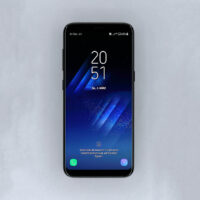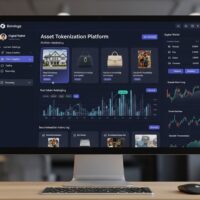
Comprehensive Guide to Taking Screenshots on a Mac
Capturing screenshots on a Mac is a versatile and user-friendly process, thanks to macOS’s built-in tools and shortcuts. Whether you need to capture an entire screen, a specific window, a selected portion, or even a timed screenshot, Apple provides multiple methods to suit various needs. This guide explores these techniques in detail, offering step-by-step instructions, comparisons, and advanced tips to enhance your screenshot experience. With a focus on clarity and practicality, this article ensures you can efficiently capture and manage screenshots for personal, professional, or creative purposes.
Mastering Keyboard Shortcuts for Screenshots
Keyboard shortcuts are the fastest way to take screenshots on a Mac, requiring no additional software. macOS offers several shortcuts, each tailored to specific capture needs. These methods are intuitive and produce high-quality PNG files by default, saved directly to your desktop or a designated folder.
Capture the Entire Screen
To capture everything displayed on your screen, press Command + Shift + 3. Upon pressing this combination, you’ll hear a camera shutter sound, and the screenshot will be saved as a PNG file on your desktop, labeled with the date and time. This method is ideal for capturing full-screen content, such as presentations or web pages. According to Apple’s official support page, this shortcut works across all macOS versions, ensuring universal compatibility.
Capture a Specific Window
For capturing a single window, use Command + Shift + 4, then press the Spacebar. The cursor will transform into a camera icon. Hover over the desired window and click to capture it. The resulting screenshot includes a shadow effect around the window, giving it a polished look, and is saved as a PNG on your desktop. This method is perfect for isolating application windows or dialog boxes.
Capture a Selected Portion
To capture a specific area, press Command + Shift + 4. The cursor becomes a crosshair, allowing you to drag and select a rectangular portion of the screen. Release the mouse or trackpad to take the screenshot, which is saved as a PNG on your desktop. This precision makes it ideal for capturing specific elements, such as a chart or text snippet.
- Efficiency: Shortcuts allow instant captures without navigating menus.
- Flexibility: Choose between full screen, window, or custom areas.
- Default Format: Screenshots are saved as PNG for high quality.
- Accessibility: No additional software or setup is required.
- Feedback: The shutter sound confirms successful capture.
These shortcuts streamline the screenshot process, making them a go-to for most users.
Using the Screenshot App in macOS
Introduced in macOS Mojave (2018), the Screenshot app provides a centralized interface for capturing screenshots and screen recordings. Activate it by pressing Command + Shift + 5. A toolbar appears, offering options to capture the entire screen, a selected window, or a selected portion, as well as record the screen. This tool enhances flexibility by allowing users to set a save location, enable a timer, or include the mouse pointer in captures.
| Method | Shortcut | Output | Use Case |
|---|---|---|---|
| Entire Screen | Command + Shift + 3 | PNG File | Full presentations, web pages |
| Selected Window | Command + Shift + 4 + Spacebar | PNG File | Application windows, dialogs |
| Selected Portion | Command + Shift + 4 | PNG File | Specific elements, cropped images |
| Screenshot App | Command + Shift + 5 | PNG or Video | Timed shots, recordings |
The Screenshot app, as highlighted by CNN Underscored, is particularly useful for users needing advanced options like timed captures or screen recordings. After capturing, a thumbnail appears in the bottom-right corner, allowing immediate editing or sharing.
Leveraging the Preview App for Screenshots
The Preview app, a native macOS tool, is not only for viewing images and PDFs but also for taking screenshots. To use it, open Preview from the Applications folder or Spotlight, then navigate to File > Take Screenshot. Choose from three options: From Selection, From Window, or From Entire Screen. The screenshot opens in a new Preview window, where you can annotate, crop, or save it in formats like PNG, JPEG, or PDF.
- Annotation Tools: Add text, shapes, or drawings to highlight key areas.
- Format Options: Save in multiple formats for compatibility.
- Immediate Editing: Crop or resize screenshots without additional software.
- Use Case: Ideal for users needing quick edits post-capture.
- Accessibility: Pre-installed on all Macs, no setup required.
Preview’s versatility makes it a powerful tool for users who need to edit screenshots immediately. For more details, refer to Apple’s Preview guide.
Using Grab for Specialized Captures
Grab, a legacy macOS utility, offers additional screenshot options, particularly for older macOS versions (pre-Mojave). Found in the Applications folder, Grab provides four capture modes: Selection, Window, Screen, and Timed Screen. The Timed Screen option is unique, allowing a 10-second delay to set up the screen before capturing, which is useful for capturing dropdown menus or tooltips.
To use Grab, open the app, select a capture mode from the Capture menu, and follow the prompts. Screenshots open in a Grab window and can be saved manually. While less common since the introduction of the Screenshot app, Grab remains a reliable option for specific use cases, as noted in BBC’s tech guides.
| Tool | Ease of Use | Features | Best For |
|---|---|---|---|
| Keyboard Shortcuts | High | Quick captures, no setup | Rapid, basic screenshots |
| Screenshot App | Moderate | Timed shots, recordings | Advanced captures, editing |
| Preview | Moderate | Editing, format options | Immediate annotations |
| Grab | Low | Timed screenshots | Legacy systems, specific needs |
This comparison highlights the strengths of each tool, helping users choose the best method for their needs.
Customizing Screenshot Settings
By default, screenshots are saved as PNG files on the desktop. However, you can customize the save location and format using Terminal commands. To change the save location, open Terminal and enter:
defaults write com.apple.screencapture location /path/to/folder
Replace /path/to/folder with your desired path (e.g., ~/Documents/Screenshots). Then, apply the change with:
killall SystemUIServer
To change the file format (e.g., to JPEG), use:
defaults write com.apple.screencapture type jpg
These commands offer flexibility for organizing screenshots. For additional customization tips, USA Today’s tech guide provides practical advice.
Advanced Tips for Screenshot Management
Beyond basic captures, macOS offers features to enhance screenshot workflows:
- Floating Thumbnail: In macOS Mojave and later, a thumbnail appears post-capture, allowing quick edits or sharing.
- Clipboard Option: Add Control to any shortcut (e.g., Command + Shift + Control + 3) to copy the screenshot to the clipboard instead of saving it.
- Screen Recording: Use Command + Shift + 5 to record video, ideal for tutorials or demos.
- Third-Party Tools: Apps like Snagit or Lightshot offer advanced editing and cloud integration.
- Organization: Create a dedicated folder for screenshots to avoid desktop clutter.
- Accessibility: VoiceOver users can enable accessibility features for screenshot navigation.
These tips, combined with macOS’s native tools, cater to diverse user needs, from casual to professional.
Comparing macOS Screenshot Tools to Other Platforms
Compared to Windows or Linux, macOS’s screenshot tools are notably intuitive. Windows uses Print Screen or Snipping Tool, which require more steps for specific captures. Linux varies by distribution, often requiring third-party tools. macOS’s integrated shortcuts and Screenshot app provide a seamless experience, as noted in tech comparisons by The Verge.
| Platform | Primary Tool | Ease of Use | Advanced Features |
|---|---|---|---|
| macOS | Shortcuts, Screenshot App | High | Timed shots, recordings, editing |
| Windows | Snipping Tool, Print Screen | Moderate | Delayed captures, basic editing |
| Linux | GNOME Screenshot, others | Low | Varies by distribution |
| Mobile (iOS) | Side Button + Volume Up | High | Quick markup, sharing |
This table illustrates macOS’s edge in user-friendly screenshot capabilities.
Conclusion
Taking screenshots on a Mac is a versatile process, with options ranging from quick keyboard shortcuts to advanced tools like the Screenshot app, Preview, and Grab. By mastering these methods, users can capture and manage screenshots efficiently for various purposes. Customizations like changing save locations or formats further enhance flexibility, while comparisons with other platforms highlight macOS’s strengths. This guide provides a comprehensive resource for both novice and experienced users to optimize their screenshot workflows.










